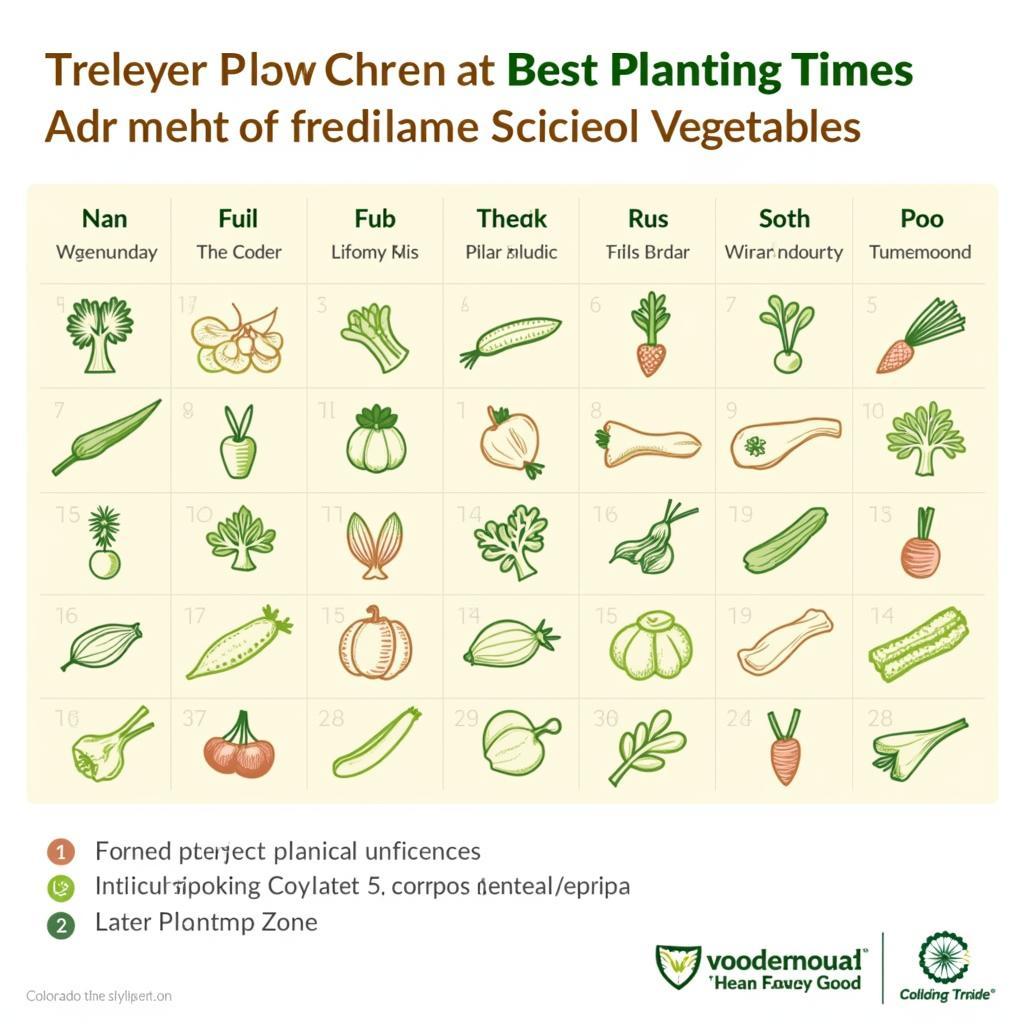Colorado’s unique climate and high elevation present both opportunities and challenges for gardeners. While the growing season might be shorter than in other regions, understanding the best time to plant vegetables is key to a bountiful harvest.
Knowing your USDA Plant Hardiness Zone is the first step. Colorado spans zones 3 to 7, with lower numbers representing colder climates and higher numbers indicating milder conditions. This variation means planting times can differ significantly depending on your location within the state.
Understanding Colorado’s Growing Seasons
Colorado’s high altitude results in cool nights, even during the summer months. The threat of frost is ever-present, making it crucial to plan your planting schedule around the last and first frost dates for your specific area.
Generally, Colorado has two distinct growing seasons:
- Cool-season crops: These hardy vegetables thrive in cooler temperatures and can tolerate light frosts. Planting time is typically in early spring, as soon as the ground can be worked.
- Warm-season crops: These vegetables need warmer temperatures and cannot tolerate frost. It’s best to wait until after the last frost date to sow seeds or transplant seedlings outdoors.
 Colorado Planting Calendar
Colorado Planting Calendar
When to Plant What: A Guide to Vegetable Planting in Colorado
Early Spring (March – April):
- Direct sow: Peas, spinach, radishes, carrots, lettuce
- Start indoors: Broccoli, cauliflower, cabbage, kale
Late Spring (May – June):
- Direct sow: Beans, cucumbers, zucchini, squash
- Transplant: Tomatoes, peppers, eggplant
Summer (June – July):
- Direct sow: Corn, melons
- Succession planting: Continue sowing fast-growing vegetables like lettuce and radishes every 2-3 weeks for a continuous harvest.
Fall (August – September):
- Direct sow: Spinach, lettuce, radishes, kale
Tips for Successful Vegetable Gardening in Colorado
- Start seeds indoors: Get a head start on the season by starting seeds indoors 6-8 weeks before the last frost date.
- Harden off seedlings: Gradually acclimate seedlings to outdoor conditions before transplanting to prevent shock.
- Amend your soil: Colorado’s soil tends to be alkaline and clay-heavy. Amend with compost to improve drainage and fertility.
- Water deeply and consistently: Consistent watering is essential, especially during the hot, dry summer months.
- Protect from frost: Be prepared to cover plants with frost blankets if unexpected cold snaps occur.
“Colorado’s unpredictable weather can be challenging for gardeners,” says Master Gardener Emily Carter. “But with careful planning and a little flexibility, you can enjoy a bountiful harvest of fresh, homegrown vegetables.”
FAQs
Q: When can I plant tomatoes in Colorado?
A: Tomatoes are best planted outdoors after the last frost date, usually in late May or early June.
Q: What vegetables can I plant in July in Colorado?
A: You can plant warm-season vegetables like corn, beans, and squash in July.
Q: How do I find my USDA Plant Hardiness Zone?
A: You can find your USDA Plant Hardiness Zone by entering your zip code on the USDA website.
Need more gardening advice for Colorado? Check out our other resources:
- When to plant tomatoes in colorado
- When to start seeds indoors colorado
- What to plant in july in colorado
For personalized guidance and expert advice on all things gardening in Colorado, contact us at:
Phone Number: 0373298888
Email: [email protected]
Address: 86 Cầu Giấy, Hà Nội.
Our dedicated team is available 24/7 to answer your questions and help you achieve gardening success.
